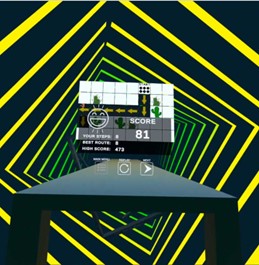Development and Usability Testing of a Virtual Reality Game for Learning Computational Thinking
DOI:
https://doi.org/10.17083/ijsg.v11i3.670Keywords:
beat saber, Computational Thinking, CT Saber, Immersive environment, Usability testing, USE questionnaire, Virtual realityAbstract
Virtual reality (VR) is an innovative technology that immerses users within its environment, holding significant potential across various sectors, including education. Developing a VR-based application in the form of a game for educational purposes necessitates a usability evaluation. This study aims to develop and evaluate the usability of a VR game, CT Saber, designed explicitly for learning computational thinking (CT). The name CT Saber is inspired by the popular VR game Beat Saber, with 'CT' denoting computational thinking to emphasize the educational focus of the game. The research employed a Design and Development Research (DDR) approach, encompassing four stages: analysis & definition, design, development, and evaluation. To assess the usability of CT Saber, pilot testing was carried out involving 36 participants (24 male, 12 female) of computer science students aged between 19-22 years. The USE Questionnaire framework was used to evaluate usability, consisting of four variables: usefulness, ease of use, ease of learning, and satisfaction. The evaluation revealed that CT Saber is categorized as 'acceptable' from dichotomous and conventional academic grading perspectives. Similarly, a multiple linear regression analysis confirmed that the independent variables (usefulness, ease of use, and ease of learning) together significantly (p < 0.01) influence the dependent variable (satisfaction). However, only usefulness significantly influences satisfaction. Responses to open-ended questions in the questionnaire also indicated predominantly positive feedback from most participants. Consequently, it can be concluded that the CT Saber VR game developed in this study successfully meets the established criteria for usability.

Downloads
Published
Issue
Section
License
Copyright (c) 2024 Sukirman Sukirman, Laili Farhana Md Ibharim, Che Soh Said, Budi Murtiyasa

This work is licensed under a Creative Commons Attribution-NonCommercial-NoDerivatives 4.0 International License.
IJSG copyright information is provided here.